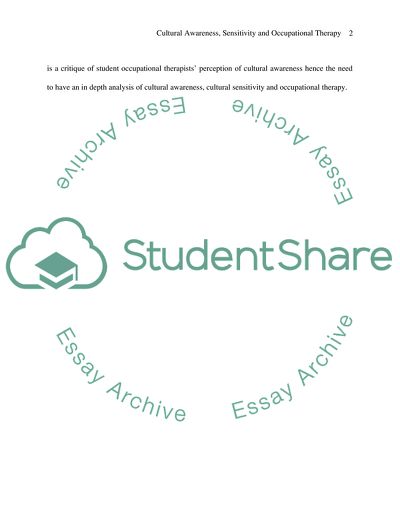Cite this document
(Investigation of Cultural Awareness, Sensitivity and Occupational Ther Assignment, n.d.)
Investigation of Cultural Awareness, Sensitivity and Occupational Ther Assignment. https://studentshare.org/culture/1734651-an-exploratory-investigation-of-student-occupational-therapists-perceptions-of-cultural-awareness
Investigation of Cultural Awareness, Sensitivity and Occupational Ther Assignment. https://studentshare.org/culture/1734651-an-exploratory-investigation-of-student-occupational-therapists-perceptions-of-cultural-awareness
(Investigation of Cultural Awareness, Sensitivity and Occupational Ther Assignment)
Investigation of Cultural Awareness, Sensitivity and Occupational Ther Assignment. https://studentshare.org/culture/1734651-an-exploratory-investigation-of-student-occupational-therapists-perceptions-of-cultural-awareness.
Investigation of Cultural Awareness, Sensitivity and Occupational Ther Assignment. https://studentshare.org/culture/1734651-an-exploratory-investigation-of-student-occupational-therapists-perceptions-of-cultural-awareness.
“Investigation of Cultural Awareness, Sensitivity and Occupational Ther Assignment”. https://studentshare.org/culture/1734651-an-exploratory-investigation-of-student-occupational-therapists-perceptions-of-cultural-awareness.


